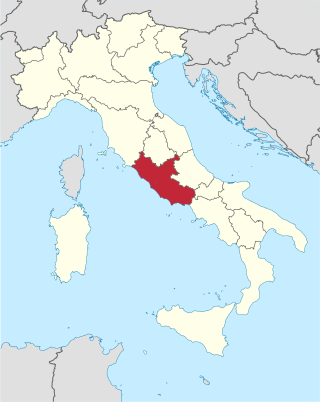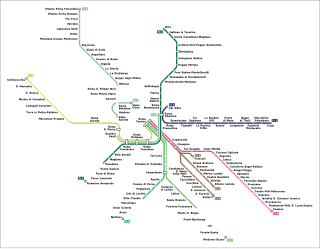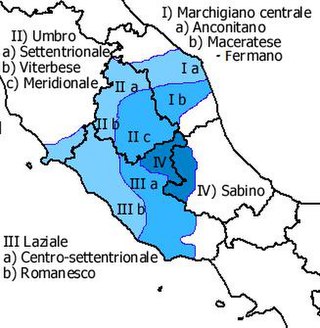History
The Capocotta estate, whose former name probably was Capocorso, [3] is attested for the first time as an autonomous entity in the 15th century, when it belonged to Camillo Capranica.
It then passed to the Borghese during the 17th century; according to the 1803 Land Register, it covered a surface of about 760 hectares (1,900 acres).
At the beginning of the 20th century, it became the private property of the Royal House, which thus intended to enlarge the adjacent Castelporziano Estate, loaned to the ruling family but owned by the Italian state.
After the end of the monarchy, the estate followed the fate of the private possessions of the House of Savoy and three-quarters of it became a property of the heirs of Victor Emmanuel III.
The planned construction of a residential district in the area was averted in 1985, when, on the initiative of environmental movements and the then President Sandro Pertini, 1,000 hectares (2,500 acres) of it were annexed to the Castelporziano estate – whose use had been granted to the President of the Republic after the war, [4] thus restoring the historical unity of the ancient territory of Laurentum . [5]
What today is referred as the beach of Capocotta is therefore, in a narrow sense, the coastal strip of the old latifundium not included in the presidential estate; this justifies the name of former Capocotta Estate for the locality.

Lazio or Latium is one of the 20 administrative regions of Italy. Situated in the central peninsular section of the country, it has 5,714,882 inhabitants and a GDP of more than €197 billion per year, making it the country's second most populated region and second largest regional economy after Lombardy. The capital of Lazio is Rome, which is also the capital and largest city of Italy.

Carlo Fea was an Italian archaeologist.

Via Severiana was an ancient Roman road in central Italy leading in Latium, running southeast from Portus to Tarracina, a distance of 80 Roman miles along the coast. A restoration and reunion of existing roads was carried out with a work of lastrification in 198–209 AD, during the reign of emperor Septimius Severus, in order to connect more quickly the maritime towns of Ostia, Lavinium, Ardea, Antium and the routes that came there from Rome.

Arrabbiata sauce, or sugo all'arrabbiata in Italian, is a spicy sauce for pasta made from garlic, tomatoes, and dried red chili peppers cooked in olive oil. The sauce originates from the Lazio region, and particularly from the city of Rome.
Giovanni Becatti was an Italian Classical art historian and archaeologist.
Mario Torelli was an Italian scholar of Italic archaeology and the culture of the Etruscans. He taught at the University of Perugia.

Italo Gismondi was an Italian archaeologist.

Sugoall'amatriciana, or alla matriciana, also known as salsa all'amatriciana, is a traditional Italian pasta sauce based on guanciale, pecorino romano cheese, tomato, and, in some variations, onion. Originating from the town of Amatrice, the amatriciana is one of the best known pasta sauces in present-day Roman and Italian cuisine. The Italian government has named it a traditional agro-alimentary product of Lazio and amatriciana tradizionale is registered as a Traditional Speciality Guaranteed in the EU and the UK.

Wilma Montesi was an Italian woman whose body was discovered near Rome. The finding of her lifeless body on a public beach near Torvajanica, on Rome's littoral, led to prolonged investigations involving sensational allegations of drug and sex orgies in Roman society.

[[File:Enrique Simonet - Ciociara - by Enrique Simonet.]]

EUR Magliana is a railway station in Rome served by the Metro line B and the Ferrovia Roma-Lido in the EUR or Europa district of Rome. It was opened in 1924 as a Roma-Lido station for the Esposizione Universale Roma as Magliana. It was later renamed Magliana Ostiense, then Magliana again and finally its present name.
The culture of Rome in Italy refers to the arts, high culture, language, religion, politics, libraries, cuisine, architecture and fashion in Rome, Italy. Rome was supposedly founded in 753 BC and ever since has been the capital of the Roman Empire, one of the main centres of Christianity, the home of the Roman Catholic Church and the seat of the Italian Republic. Due to its historical and social importance, Rome has been nicknamed the Caput Mundi, or "capital of the world".

Via Cristoforo Colombo is a street in Rome (Italy) that links the historic centre to Ostia. Along most of its route, the street has three lanes for each direction of movement. With its 27 kilometres (17 mi) length it is the longest Italian road among those included within the borders of a single municipality and, in several stretches, the largest in Italy.

The Cavallo Romano della Maremma Laziale, or "Roman horse of the part of the Maremma that is in Lazio", is a horse breed native to the Lazio region of Italy. An ancient breed, it was officially recognised only in 2010; it is now one of the fifteen indigenous horse "breeds of limited distribution" listed by the AIA, the Italian breeders' association. The Lazio region has assigned it the conservation status "at risk of erosion". The population numbers about 800, of which most are in the comune of Monte Romano in the province of Viterbo; a herd of approximately 200 is at Ponzano Romano in the province of Rome, and others are in the province of Rieti.

Enio Girolami, sometimes credited as Thomas Moore, was an Italian film and television actor.

The FL8 is a regional rail route. It forms part of the network of the Lazio regional railways, which is operated by Trenitalia, and converges on the city of Rome, Italy.

Maria Floriani Squarciapino (1917-2003) was an Italian classical archaeologist and professor at La Sapienza University in Rome, known for her work on the Roman port city of Ostia.

Maccarese is a locality in Lazio, Italy, in the Metropolitan City of Rome. Its administration is divided between the Municipalities of Rome and Fiumicino, of which it is a frazione.
It was entirely part of the Municipality of Rome until 1993, when the former Circoscrizione XIV, which included a part of the hamlet, became the autonomous Municipality of Fiumicino.

The Litorale Romano state nature reserve is a protected area in Lazio (Italy), established by the Ministry of the Environment with Ministerial Decree of March 29, 1996, which includes a large territory of historical-naturalistic interest within the municipalities of Rome and Fiumicino.
With its over 17,000 hectares, discontinuously distributed along the Lazio coast between Palidoro and Capocotta, it is the largest protected area overlooking the Mediterranean Sea. Its management is entrusted to the two municipalities in their respective sections of competence.

The Central-Northern Latian dialect is an Italian dialect belonging to the Central Italian dialects, of which it represents the southern offshoot.


















